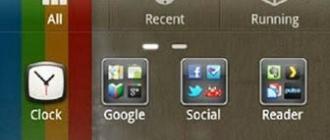iTunes is a useful and versatile application. It helps Apple product owners work with information on smartphones and tablets. For example, restore data. For this, there is a function that allows you to create backups. You can easily return this or that information to your iPhone or iPad at any time. Fast, easy, convenient! Only sometimes it is necessary to find a specific package of information with which iTunes worked. Where are the backups stored? How are they created? What should every user know about?
Windows base
The operating system with which the user works will play a huge role. The fact is that on different operating systems, data is recorded and stored at various addresses.
What does iTunes offer? Where are backups of user information stored? For example, on Windows. Most of the owners of mobile devices work with this operating system.
In order not to get confused, you can use the following search recommendations:
- Windows XP. In practice, it does not occur so often, but it does occur. You must go to "My Computer". Next, go to the hard disk partition where the operating system is installed. There go to the following address: Documents and Computer. Here open the MobileSync folder. ITunes data backups will be located in BackUp.
- Windows Vista. To date, work in this OS has practically lost its relevance. In it you will need to go to Documents and Settings / AppData / Roaming / Apple Computer. All other searches will be exactly the same as in the previous case.
- Windows 7-10. The most common scenario. It is under the control of these versions that iTunes is most often launched. Where are user backups stored? In the same place as in all previous cases. The only difference is that to open AppData, you will have to initially follow the path: C: / Users / username. The BackUp folder in MobileSync is exactly what you need.
In fact, there is nothing difficult in the search process. Only a few users note that sometimes BackUp is missing. What to do in a similar situation?

Lack of BackUp
The main thing is not to panic. The fact is that the problem under study is encountered by many users. There is no need to be afraid of it, everything can be fixed in a few clicks.
The problem is with Windows settings. In fact, there is a BackUp folder, it is simply hidden from the user's eyes. To find it at the previously indicated addresses, you must:
- Go to "Start" - "Control Panel".
- Select "Folder Options" - "View".
- Customize the display of hidden files and folders. To do this, you must mark the appropriate items and save the changes.
After the actions taken, all hidden documents on the computer will become available to the user. So, "BackUp" can also be found.
For Mac
Some users work not with Windows, but with MacOS. iTunes is perfectly compatible with such an operating system. But in it, you also need to know where to go to find backups with human data.
In general, the process is not much different from the previously proposed algorithms. The required folder from "ITunes" is located in MobileSync. You can find it in: user / library / Application Support.

Accordingly, this is where the application changes? This question will no longer cause trouble. You can find the document you want in just a few clicks.
About compatibility
The corresponding information is stored in a folder with a particular copy. To check the version of the device that is compatible with the information, you need:
- Open BackUp and go to the folder with the required data package.
- Find the Info.Plist file. It opens with a text editor. For example, through "Notepad" in Windows.
- Study the contents of the document carefully. After
Product Name there will definitely be a mention of the version of the smartphone on which the copy of the data will run.
All these actions can be mastered even by a novice user. Was a backup made to iTunes? The storage location of the corresponding document is now known. And even how to check its compatibility, too.
Methods for making a copy
Before looking for backup data, you need to create it. Not everyone knows about this procedure either. How do I create a backup using iTunes? Bringing the idea to life will not take much time. It is enough to follow a short instruction.
Backing up via iTunes goes something like this:
- Download and install the latest version of "ITunes".
- Connect the mobile device to the computer using a wire.
- Launch the previously installed application.
- How to create a backup in iTunes? Select the connected device in the menu, go to the "Overview" section.
- In the menu, select the "Make a copy now" button.
- Click on "OK" after the completion of the process.
This is the simplest solution. You can also work with iCloud or third-party apps. But this is not the best solution. After all, an iPhone backup via iTunes is created in just a few clicks!

Results and conclusions
From now on, it is clear how to work with backup data on an iPod or iPhone. Finding them on your computer is no longer difficult. Each user is able to bring the idea to life.
IPhone backup via iTunes is restored if necessary. It is recommended not to store such documents on your computer. This is a kind of data protection method. It is advisable to transfer all copies of the iPhone to removable media.
Despite the fact that Apple offers iPhone owners to create backups to the cloud, not everyone uses this opportunity. Many users prefer to act the old fashioned way. Local copies are created using iTunes and stored on your computer. This method eliminates the need to use the Internet, but at the same time increases the dependence on the reliability of PC components. A fatal OS error or hard drive failure can result in irreversible data loss. You can protect yourself from unpleasant surprises if you know where the iPhone backup is stored on your computer.
and backups
Aityuns has been and remains the standard program for working with Apple smartphones on macOS or Windows. With it, you can connect any iPhone to your PC: 4S, 5, SE, 6, 7, 8 or X. The storage format for backups that will be created is the same for all compatible OS. This allows them to be transferred from Mac to Windows computer and vice versa without editing. The choice of storage location is done by each user the first time they connect to iTunes. After that, you can wirelessly synchronize your mobile device with your PC or cloud.

Let's take a closer look at where to find local copy files in different operating systems.
Mac computers
On computers manufactured by Apple, ready-made backups are stored in the "Libraries" area protected from direct user access. You can quickly find them directly from iTunes preferences.
In the upper status bar, click on the name of the program. In the drop-down menu, select the item marked in the screenshot.

In iTunes settings, go to the "Devices" tab. After selecting the backup of interest, we call the context menu. The item shown in the following photo allows you to open the protected area or delete an unnecessary copy.

The folder where the backup is stored is alphanumeric. The content is encrypted and cannot be viewed. The found directory can only be saved to external media or copied to another computer.

Windows computers
There are several ways to install iTunes on your PC. Classic means using the installation package of the program. On Windows 10, you can use the Microsoft Store for this purpose. The location of the copy files depends on the chosen installation option.
Classic setup
The installation package is suitable for use on any version of Windows. Backups created in iTunes installed in this way will be saved in a directory that is hidden by default. It can be made visible in the OS settings, but we use a different access option.
We call the "Run" menu with the keyboard shortcut Win + R. Enter "%%" in the text box. Thus, we can find and view the backup files directly, without having to navigate through the menu items.

An Explorer window will open, in which we need to find the "" directory marked in the screenshot.

Sequentially open the folders nested in it, following the path marked with a frame. The iPhone backup we need will be stored in the "" directory. The folder with it is indicated by an arrow in the screenshot.

Windows 10
When using iTunes installed from the application store, iPhone backups will be located in a different directory of the operating system. To find them again, use the "Run" menu.
Enter the command "% userprofile%" into the text field.

In the Explorer window, this time you need to look for the "Apple" directory.

Sequentially opening the subfolders, we find the one indicated in the screenshot. It, like last time, will be placed in the "" directory.

Copy management
You can copy a backup from another computer to the storage locations described above. This will automatically add the data to iTunes.
Open the program and click on the "Edit" tab in the control panel. In the drop-down menu, go to the "Settings" item marked in the screenshot.

Switch to the "Devices" section. If you hover the mouse over the list of backups, you can view general information about the smartphone in the pop-up menu. When another PC was used to create a backup, the option may be useful. When the files contained in the list are selected, the button marked with the number “three” automatically becomes active. Thus, based on the information about the data contained in the backup, you can make a decision and delete files that are irrelevant for storage.

Finally
Following these tips, you can find a local iTunes backup on any compatible operating system.
Video instruction
In the video below, you can learn more about how to perform these steps.
I don’t know about you, but for me the contents of the memory of my iPhone 5s are much more expensive than the device itself. If you bought it once, you can buy it a second or third time, but if it is possible, accumulated over the years, it is not easy to do it.
How to Transfer iTunes Backups to Another Drive in Windows 7, 8 & 10
- Close iTunes.
- Copy or move the "C: \\ Users \\ username \\ AppData \\ Roaming \\ Apple Computer \\ MobileSync \\ Backup \\" folder to another drive (replace your username with your own). Just in case, copy the folder somewhere else.

In my Windows 10 virtual machine, it is located along the path: C: \\ Users \\ le7andr \\ AppData \\ Roaming \\ Apple Computer \\ MobileSync \\ Backup \\
- Run the command line (command line handler) "сmd.exe" with administrator rights ("Start" -\u003e "Find programs and files" -\u003e "cmd" -\u003e Right-click the context menu on the file "cmd.exe" and select "Run as administrator"). The name of the command line window must contain "Administrator: С: /Windows/System32/cmd.exe".


- Enter the command: MKLINK / D "from" "where"
Example:
mklink / d "C: \\ Users \\ Alexander Varakin \\ AppData \\ Roaming \\ Apple Computer \\ MobileSync \\ Backup \\" D: \\ iTunes \\ BackupReplace "Alexander Varakin" with your username. If the path contains spaces (here - Apple Computer), it must be enclosed in quotation marks (""). To avoid typing the path manually, drag the required folder into the command prompt window. Press "Enter".

- Example of command execution.

- Launch iTunes and check for backups in the program settings on the "Devices" tab.

How to Transfer iTunes Backups to Another Drive in Windows XP
- Close iTunes.
- Copy or move the "C: \\ Users \\ username \\ AppData \\ Roaming \\ Apple Computer \\ MobileSync \\ Backup \\" folder to another drive (replace your username with your own). Just in case, it's better to copy the folder somewhere else.
- Delete the "Backup" folder on the system drive (where the backups were moved from).
- Download Junction from the link, unzip, for example, to the root of the "C" drive.
- Run the command line "сmd.exe" with administrator rights ("Start" -\u003e "Find programs and files" -\u003e "cmd" -\u003e Right-click the context menu on the file "cmd.exe" and select "Run as administrator "). The name of the command line window must contain "Administrator: С: /Windows/System32/cmd.exe".
- At the command prompt, enter the command: C: \\ Path_to_Junction \\ junction.exe "from" "where" -s,
- "Where" - the previous location of the "Backup" folder on the system drive;
- "Where" is the new path to the folder with backups.
Example: C: \\ Junction \\ junction.exe "C: \\ Users \\ Alexander Varakin \\ AppData \\ Roaming \\ Apple Computer \\ MobileSync \\ Backup \\" D: \\ iTunes \\ Backup -s
- Launch iTunes and check for backups in the program settings on the "Devices" tab.
How to Transfer iTunes Backups to Another Drive in Mac OS X
For Mac computers with the function of backing up using the built-in OS X Time Machine program or third-party and the issue of the safety of backups is not so acute, but still useful to someone.
On Mac computers in OS X, the procedure is slightly simpler:

Backups transferred to another disk will be available in iTunes until the next reinstallation of the operating system, after which the symbolic links will need to be recreated.
As you can see, there is nothing difficult about finding an iTunes backup on your Windows or Mac computer. It is not difficult to move "heavy" backups to another drive (partition or external drive) and associate them with iTunes using symbolic links.
If you have any questions or additions, write in the comments - we will discuss.
Hello! This article will be small, but this will definitely not make it less useful. Today we will be looking for you. What? The location where iPhone backups are stored. What for? For example, to transfer files and save them on a USB flash drive (it will be very useful when reinstalling windows). Or, in order to save space on your hard drive. After all, outdated data is often not needed, but precious megabytes, and what is there - they take up gigabytes.
Why so much? Because a complete image of your device is stored, including almost everything! For example: photo, calendars, voice recorder, notes, contacts, messages, program data, bookmarks, clips, wallpaper, data on wireless connections Wi-Fi, Bluetooth…. etc.
An important note: all that is written above and below will be useful not only for the owners of the best phone from Apple, but also for the owners of an equally excellent iPad tablet and a cool iPod music player.
As we know, you can create a backup of information using either or. So here's the place where the iPhone is backed up, for each of these methods is different.
Let's start with the iCloud cloud.
In this case, your data is stored on Apple servers. However, I want to remind you that the size of the free storage is only 5 gigabytes. For a larger volume - you need to pay extra. Therefore, if you had several gadgets of the apple company, and are using one now, I recommend deleting the old, unnecessary "device information". To find them, go to the settings, select iCloud:

Scroll down - the item "storage and ....", on the next screen, click on the storage.


Here they are! :) You can see detailed information: volume, date of creation, which applications and how much space they take. And then delete the iPhone backup.



True, you can't copy it anywhere. But this is not necessary, because you can always access it thanks to your Apple ID (what is it readable) and your iCloud account. Updated! You can download and view data from the "clouds"! How? We read!
IPhone Backup to Computercreated with iTunes - can be in different places, it all depends on the operating system that is used. Below is a small figure with their locations for various Windows versions, as well as for Mac Os.

If suddenly you did not find these folders, then enable the "display of hidden files" in the parameters (relevant for owners of Windows computers).
As promised, the instructions are short. But the goal, I think, has been achieved. Now you know where the iPhone backups are. That will allow you to manage them at your discretion - delete, transfer, copy.
P.S. Did you not understand something or have any questions? Feel free to ask them in the comments - I will definitely try to suggest and answer absolutely everyone! Write!
P.S.S. Put "likes" and click on the social media buttons located under the article! What for? It's just that it's not hard for you to do this, but the author will be pleased :)
User data is stored as files on PC hard drives. They can also be stored and (external hard drives, CD / DVD disks, flash drives, etc.).
The data must be kept separate from the software. When storing data together with programs, there is a risk of unintentional damage to programs, which can also lead to the destruction of the operating system.
Whenever possible, it is best to store user files NOT on the C: drive where the operating system files are located. Well, if the computer has only one hard drive C :, then you can advise to create a folder on it, for example, with the name "D:".
Then you need to make a shortcut to this folder (right mouse button - "Create shortcut") and rename it, for example, "Disk_D". The shortcut should be placed on the desktop of your computer, and all user data should be written to this folder D, thereby imitating, as it were, another disk named D, which is not actually on your computer.
The operating system itself offers a more secure option from prying eyes. It has a folder "My Documents" in which users are invited to store all their data. This folder even contains pre-prepared internal folders for storing music, videos, documents, etc.
In the latter case, data protection is that only the user who enters your username and password can access the My Documents folder if you have set the login mode with an account. If the username and password are not requested when turning on the PC (many users avoid this at home in order not to forget the password), then storing files in My Documents is no more secure than storing them in any other folder.
Your folder (be it "My Documents" or "Disk_D") must have a certain order. Your files should be sorted into folders. should be understood, they should not be designated, for example, "1", "2", etc. Better to come up with understandable names for them.
It is also better to name files with meaningful names. If you store different versions of the same files, then it is better to call these versions the same name, but add, for example,
- "Materials about netbooks_version 1",
- "Materials about netbooks_version 2",
- "Netbook Materials_version 3"
- etc.
The file system of the PC automatically puts down the dates of the creation of files for the convenience of their subsequent search (by the date of creation, for example), but you can also manually put the date directly into the file name, which is convenient again in the case of simultaneous storage of several versions of the same document , eg:
- (01.03.2012) Teapot or user
- (03.03.2012) Teapot or user
- etc.
If the file names are self-explanatory and speak for themselves, then you can always use the built-in file search service:
- in Windows XP: "Start" - "Find" - "Files and folders",
- in Windows 7: "Start" - "Find programs and files".
It will be enough to enter the name of the file of interest or a fragment of the search text stored inside the file. And you will receive a selection of files that match the search conditions.
The general principle that should be guided by a confident user in matters of data storage can be formulated as follows.
- The more accurately and thoroughly the data files are prepared for storage, the easier and easier it is to find this data later.
- The user must always remember that he can forget where and what he has stored.
- And only if there is a certain order in the structure and naming of folders, as well as in file names, you can quickly find the information of interest stored in the PC.
- You should get into the habit of using Search if necessary.
You should periodically save your files somewhere outside of your computer. Otherwise, the irreparable may happen, and you will lose everything that you have gained for weeks, months and even years.
Get the latest computer literacy articles straight to your inbox.
Already more 3.000 subscribers






